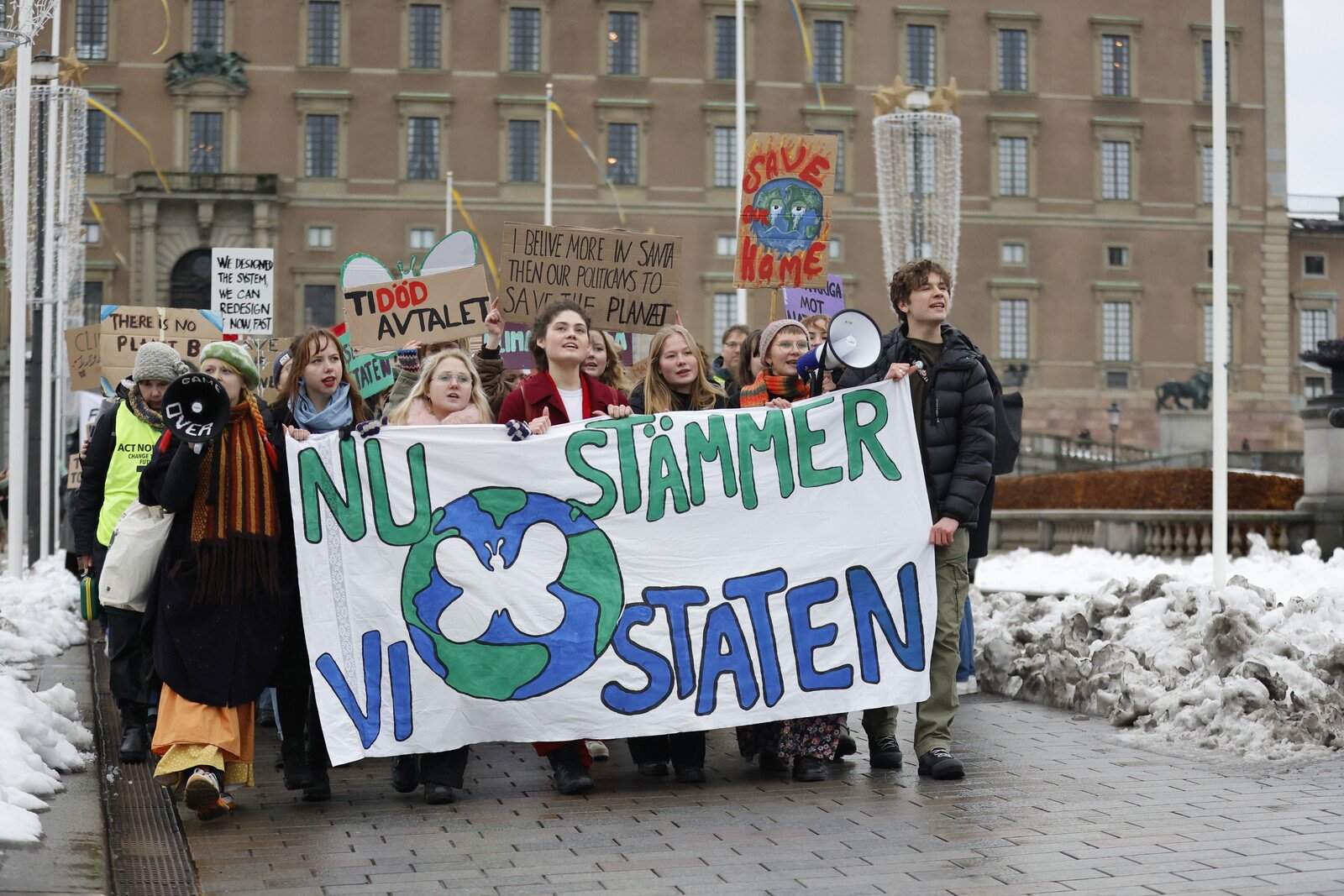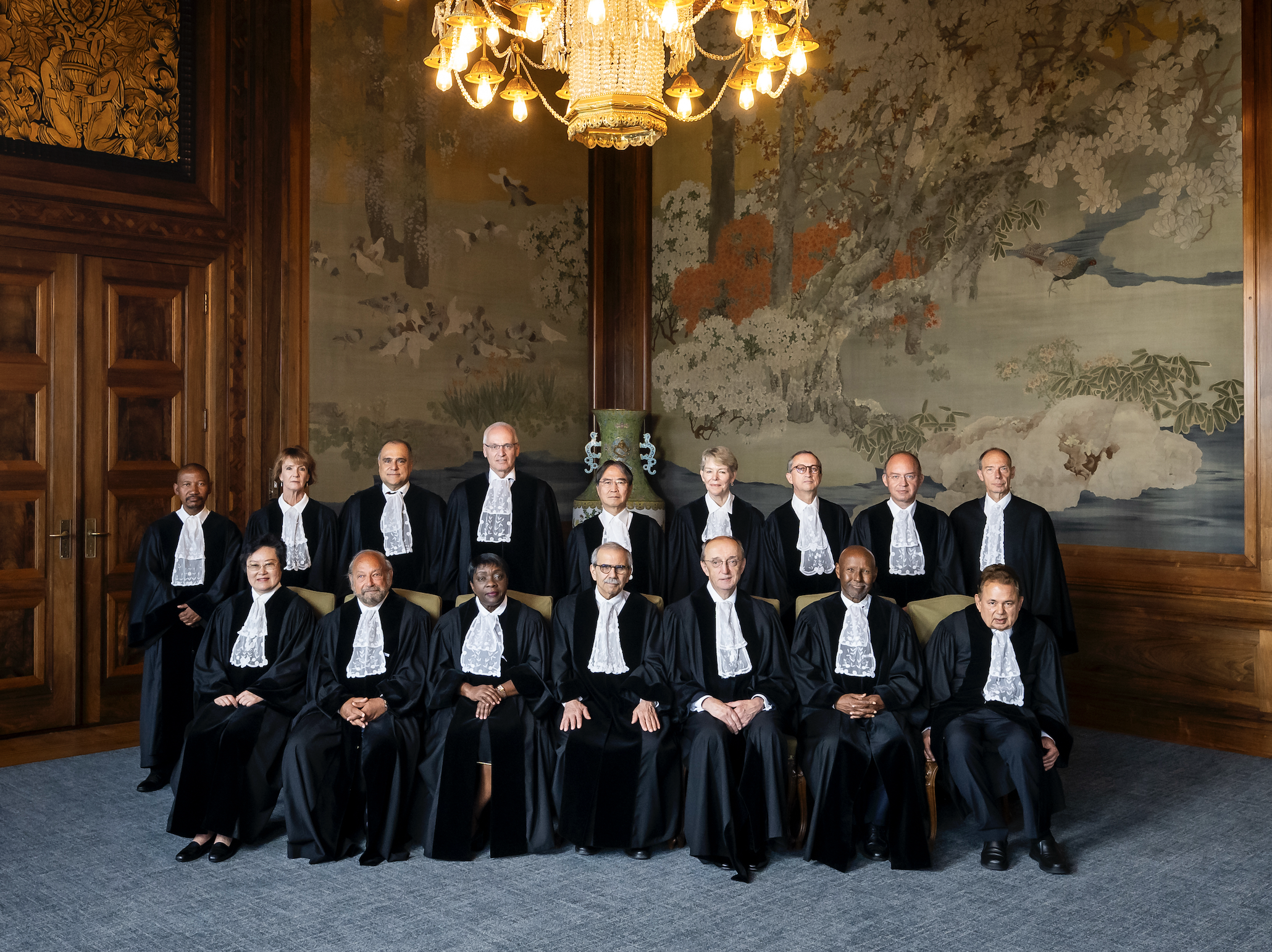
On February 19, 2025, the Swedish Supreme Court dismissed the Aurora case (Anton Foley and others v Sweden), the first systemic climate change case brought in Sweden. The case is among the first in which a national apex court has applied the principles developed by the European Court of Human Rights (ECtHR) in Verein KlimaSeniorinnen and others v Switzerland. It sheds light on how national courts may interpret KlimaSeniorinnen, particularly on separation of powers.
About Aurora
The claim was brought by over 300 young individuals against the Swedish state, arguing that Sweden’s inadequate climate action violated their human rights under the European Convention on Human Rights. They invoked the rights to life (article 2), private and family life (article 8), non-discrimination (article 14), and property (article 1 of protocol 1). Their claim rested on Sweden’s failure to calculate its ‘fair share’ of global greenhouse gas (GHG) emissions and to adopt emissions reductions in line with best available science. The applicants called for annual reductions of 6.4-9.4 million tons of CO2-equivalent between 2019 and 2030, including 2.2-3.1 million tons reduced domestically.
Filed in November 2022, the case was referred to the Supreme Court by the Nacka District Court in April 2024 for a preliminary assessment of justiciability. The Supreme Court dismissed the claim, on two grounds: (1) lack of victim status, and (2) infringement on the separation of powers doctrine enshrined in the Swedish constitution. These are discussed in turn below.
Victim status
In KlimaSeniorinnen, the ECtHR established an ‘especially high’ threshold for individual victim status in climate change cases. Applicants must show a ‘high intensity of exposure to the adverse effects of climate change’ and a ‘pressing need’ for their individual protection (para 487). The Swedish Supreme Court held that the applicants in Aurora did not satsify this test. It also held that the applicants could not be considered equivalent to an association satisfying KlimaSeniorinnen criteria for representative standing (para 502). Although the Supreme Court noted the KlimaSeniorinnen criteria for standing for associations, it did not engage with how the claim would be assessed if it had been brought by an association.
These findings are not surprising. The application was broadly framed, citing long term risks without demonstrating concrete impacts on the individual applicants. While the applicants referred to their young age and heightened exposure to harm in the future, the argument lacked the individualised element required by the ECtHR in KlimaSeniorinnen.
In light of these outcomes, it still remains to be seen how the Swedish courts will in future cases interpret and apply the ECtHR’s rules on victim status and standing. The Court’s cautious approach to climate change litigation overall (elaborated in the following section) suggests that Swedish courts may hesitate to find victim status until the ECtHR has done so itself. Consideration of these criteria can be expected in Müllner v. Austria, which is up next on the ECtHR’s climate docket and could help clarify how the victim status test should be applied in practice.
That said, Swedish courts may soon be called upon to interpret and apply the ECtHR’s standing test more directly. Following the Supreme Court’s decision, the case was remitted to the Nacka District Court. On April 14, 2025, a request was made to transfer the claim from the individual applicants to the association Aurora, in response to the Supreme Court’s reasoning. In an accompanying press release, Aurora indicated that if the Nack District Court rejects the transfer, it will initiate a new claim.
Separation of powers
In addition to rejecting Aurora on standing grounds, the Swedish Supreme Court addressed whether the type of claim (a ‘systemic mitigation’ argument) presented in the case falls within the courts’ constitutional mandate. Specifically, it considered this in light of the separation of powers under the Swedish constitution (‘Regeringsformen’). Its decision to engage with this issue, despite the claim’s inadmissibility on other grounds, suggests an intention to clarify the permissible scope of climate litigation in Sweden.
The Court assessed two types of claims: (1) those seeking the adoption of specific measures (‘fullgörelsestalan’) and (2) those seeking declaratory judgments (‘fastsällelsestalan’). It held that the former (climate change claims aimed at specific measures) cannot be heard at all by the Swedish courts. Such claims were considered political and not part of the courts’ role in administering justice (‘rättskipning’). On this basis, the Court ruled that access to court under article 6 ECHR could be restricted, citing the ECtHR’s finding that ‘maintaining the separation of powers between the legislature and the judiciary is a legitimate aim as regards limitations on the right of access to a court’ (KlimaSeniorinnen para 627).
Notably, the Supreme Court did not engage with other parts of KlimaSeniorinnen, in which the ECtHR highlighted the importance of judicial review in climate change cases: ‘democracy cannot be reduced to the will of the majority of the electorate and elected representatives … the remit of domestic courts … is therefore complementary to those democratic processes. The task of the judiciary is to ensure the necessary oversight of compliance with legal requirements’ (KlimaSeniorinnen para 412). The Supreme Court’s selective engagement with KlimaSeniorinnen may thus result in a narrower scope of judicial review than what the ECtHR arguably intended.
The Swedish Supreme Court also took a restrictive approach to declaratory judgments. It acknowledged that article 6 may require access to court to declare a rights violation, but rejected this possibility if such a declaration could imply an obligation on the state to legislate. It implied that a judgment to that end would infringe on the separation of powers. Consequently, the only type of claim that could be heard is one that seeks a declaration of a violation of article 8, without requiring or implying legislative change (Aurora para 79). Even in such cases, the Court stressed that determining climate policy remains the responsibility of the parliament and government (Aurora para 80).
Notably, the Court left open what ‘form and degree’ of state omission might suffice to establish a violation of article 8, without referring to the ECtHR’s guidance on this point. In KlimaSeniorinnen, the ECtHR set out five aspects of state mitigation policy subject to review under article 8: (a) adoption of overall targets with a timeline for carbon neutrality and quantification of future emissions, in line with national and/or international mitigation commitments, (b) intermediate goals and pathways aligned with the overall reduction goals, (c) compliance with targets; (d) updating targets based on best available evidence, and (e) timely, appropriate, and consistent action (KlimaSeniorinnen para 550). In addition, states have procedural obligations to provide access to information and participation in decision-making in climate change matters (KlimaSeniorinnen para 554).
Given the Supreme Court’s consistent engagement with KlimaSeniorinnen elsewhere, its silence on the content of state obligations outlined therein stands out. It may reflect a desire to avoid taking a stance on substantive issues until a case passes admissibility hurdles. This may also allow the courts to wait until the ECtHR’s climate change jurisprudence is further developed. The omission could also be a reflection of the politically sensitive nature of climate change litigation based on the ECHR. KlimaSeniorinnen has been controversial (see here and here), also in Sweden, where critics have argued that judicial intervention in climate policy undermines democracy. In this context, by engaging extensively in the question of separation of powers, and making use of the risk of a violation of the separation of powers in order to limit the use of article 6, and refraining from referencing the substantive elements of state obligations, the Swedish Supreme Court’s reasoning reads as a desire of the Court demonstrate deference to the political institutions.
Whatever the reason, the Court’s approach sends the following message: Swedish courts may only hear narrowly framed article 8 claims, without determining climate policy goals or measures. While this may prompt prospective applicants to tailor their claims, it also appears to leave itself and lower courts with discretion as to how to assess state compliance with article 8.
The dissenting opinion of Justice Dag Mattsson
Justice Dag Mattsson issued a dissenting opinion, taking an even more restrictive view than the majority. He argued that the claim fell outside the courts’ mandate under the Swedish constitution, since it concerned the general impacts of climate change. In his view, such questions are inherently political and must be left to political organs.
He argued that the central question prompted by Aurora is whether or not engaging with the claim can be considered administration of justice (‘rättskipning’) in the context of the Swedish constitution and that KlimaSeniorinnen is irrelevant in this assessment (Aurora p. 39). While he acknowledged Sweden’s obligation to respect the judgment, he framed it as primarily relevant in an international law context, and argued that its findings were tailored to Switzerland and thus not directly applicable to Sweden (Aurora p. 31-34). This stands out, since parts of the ECtHR’s assessment (see e.g. para 550 and 554) seem to set out state obligations under article 8 in the context of climate change generally, not specific to Switzerland. In fact, this is so much so that Heri argues that the judgment has qualities akin to an advisory opinion, despite being a contentious case.
Mattsson emphasized that integrating ECtHR jurisprudence must be done carefully, especially when it affects the separation of powers. He warned that even a declaratory judgment finding a violation of article 8 could be problematic in this respect. While he recognized that such a judgment would not formally require the state to act, it would call into question how free the state would be to act following such a judgment and that it, in any event, would lead to ‘problematic tension’ between the political and judicial branches of government, and would undermine the legitimacy of the different branches’ positions (Auora p. 46). As a consequence, Mattsson rejected the possibility that mitigation claims, regardless of whether they seek specific measures or declarations, could be assessed by the Swedish courts. The implication of his reasoning is that no systemic mitigation claims could be brought in Sweden.
Mattsson’s position raises difficult questions about how national courts are to give effect to KlimaSeniorinnen. Drawing a boundary between international and national law, as Mattsson does, with ECtHR judgments primarily relevant in their international law context, risks undermining the principle of subsidiarity, which tasks ECHR states with the primary responsibility for safeguarding Convention rights. Moreover, his concern that court engagement with mitigation cases might create political tension could suggest that courts should abstain from review in cases where matters put before them are politically sensitive. That logic could insulate many areas of policy from judicial scrutiny.
Implications for domestic climate change litigation post-KlimaSeniorinnen
The Aurora judgment sets narrow boundaries for future climate change litigation in Sweden. While the case only reflects the Swedish understanding of KlimaSeniorinnen, its approach indicates one possible interpretation that courts in other Council of Europe states could follow. It is thus worth unpacking what the Swedish approach could mean for rights-based climate change litigation in Europe.
First, Aurora implies a very narrow litigation margin. Claims seeking the adoption of specific goals or measures are inadmissible, regardless of whether this is explicit or implied. The only claims Swedish courts may assess are those seeking a declaration of a violation of article 8 ECHR, brought by applicants who satisfy the ECtHR’s individual victim status or representative standing criteria. On this point, how the Swedish courts will approach the interpretation and application of the representative standing criteria may soon be revealed, following the request to have the claim transferred to the association Aurora. This procedural move seeks to align the case with the KlimaSeniorinnen criteria, which may allow clarification from the Swedish courts to emerge.
Second, the scope of permissible judicial review remains unclear but appears limited. The Supreme Court did not cite the substantive or procedural obligations outlined by the ECtHR, merely noting that the ‘degree and form’ of state omission required for a violation remains in question. In principle, courts might assess whether existing climate policy meets the ECtHR’s requirements under article 8, provided that the claim triggering the assessment does not call for the adoption of new goals or measures. However, given Sweden’s broad margin of appreciation in implementation (KlimaSeniorinnen para 543) and the Supreme Court’s generally cautious approach, it seems unlikely that courts will scrutinize any specific policies. At most, review may be limited to assessing whether overarching mitigation goals exist (falling within the narrow margin of appreciation, KlimaSeniorinnen para 543) and whether they align with the state’s international commitments.
Third, even the cases that make it to the courtroom will not result in binding remedies. The Swedish Supreme Court held that any finding of a violation must respect the separation of powers and the reasoning in this regard will not be binding. The state will therefore remain entirely free to determine the pathway for future climate change policy. As such, a declaration of an article 8 violation would not compel the state to act.
The result is a narrow and highly qualified space for systemic mitigation claims in Sweden: only cases brought by applicants satisfying the ECtHR’s victim status or representative standing tests that make narrow arguments seeking a declaration of article 8 will be heard. These cases may receive a very limited substantive review, on grounds yet unknown. In the event of a finding in favor of the applicants, the state will not formally be required to act at all.
This leaves a highly constrained scope for judicial review in climate change cases in Sweden. If replicated elsewhere, this approach could weaken both the availability and effectiveness of the type of litigation envisioned by the ECtHR in KlimaSeniorinnen. Further guidance from the ECtHR will be key to clarifying whether this interpretation is justified and whether invoking the separation of powers can be legitimately used to restrict climate change litigation to such a degree. Clarifying jurisprudence may come from one of the many climate change applications pending before the Court.

Linnéa Nordlander
Linnéa is an Assistant Professor at the Faculty of Law at the University of Copenhagen and a rapporteur for Sweden for the Sabin Center's Peer Review Network.



